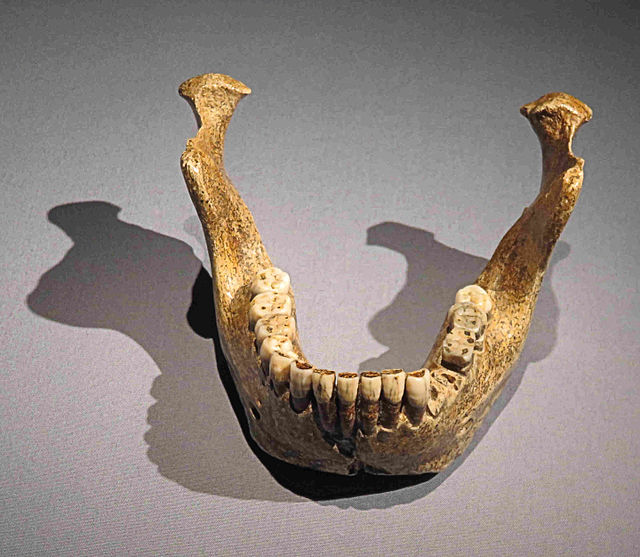The Steinheim skull is a fossilized skull of a Homo neanderthalensis or Homo heidelbergensis found on 24 July 1933 near Steinheim an der Murr, Germany.
Original skull and holotype of the obsolete "H. steinheimensis"
Replica of the Steinheim skull. Note that the skull's brow ridges and slope of the forehead are not visible from this front angle.
A contrast-enhanced CT scan of the brain, demonstrating the appearance of a meningioma
Homo heidelbergensis is an extinct species or subspecies of archaic human which existed during the Middle Pleistocene. It was subsumed as a subspecies of H. erectus in 1950 as H. e. heidelbergensis, but towards the end of the century, it was more widely classified as its own species. It is debated whether or not to constrain H. heidelbergensis to only Europe or to also include African and Asian specimens, and this is further confounded by the type specimen being a jawbone, because jawbones feature few diagnostic traits and are generally missing among Middle Pleistocene specimens. Thus, it is debated if some of these specimens could be split off into their own species or a subspecies of H. erectus. Because the classification is so disputed, the Middle Pleistocene is often called the "muddle in the middle".
Homo heidelbergensis
The type specimen Mauer 1
Cast of Sima de los Huesos Skull 5 ("Miguelón") at the Natural History Museum, London
Cast of Kabwe 1 at the Natural History Museum, London







